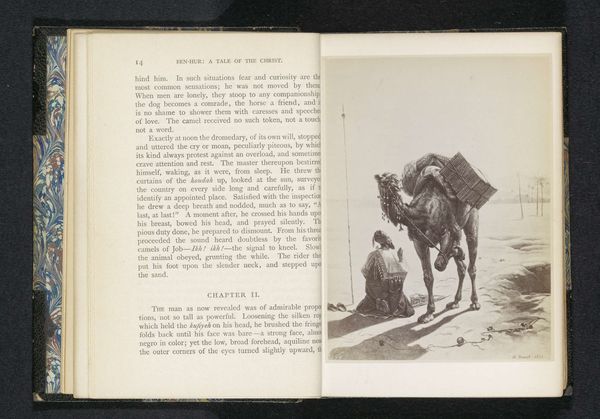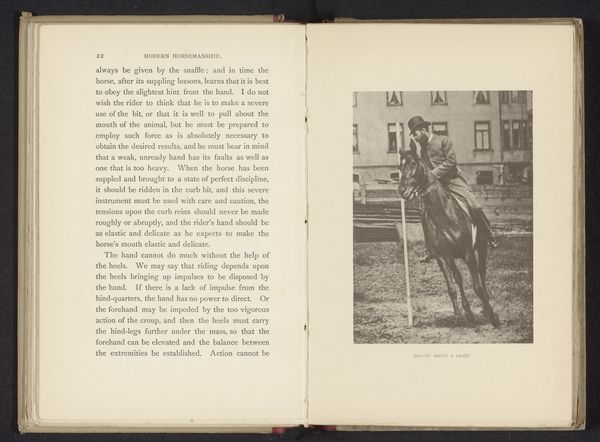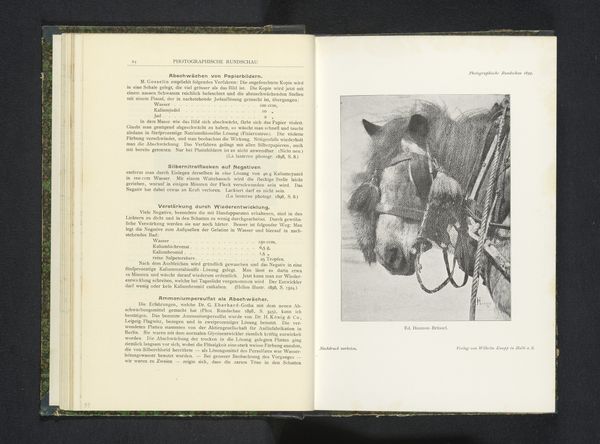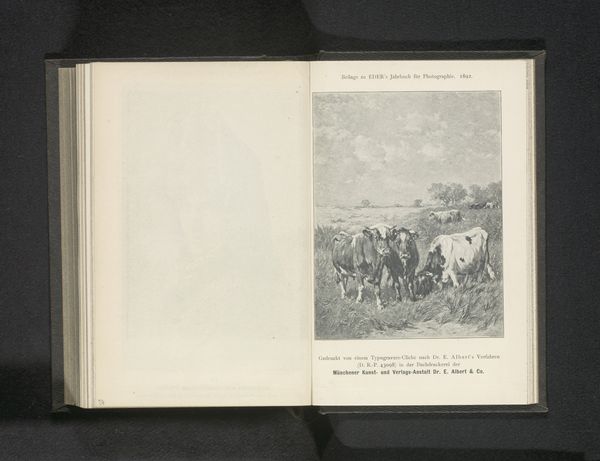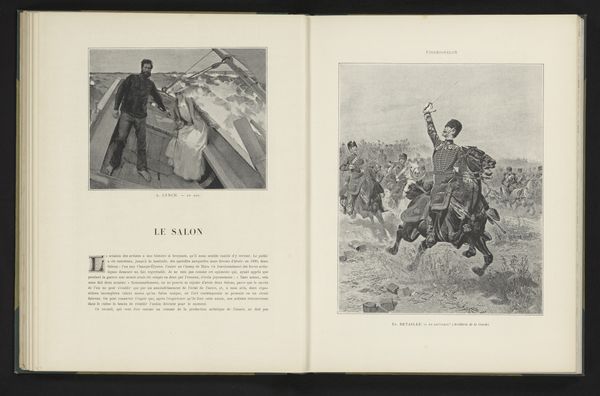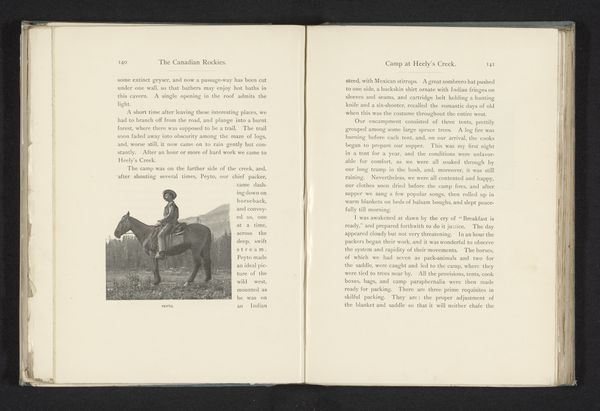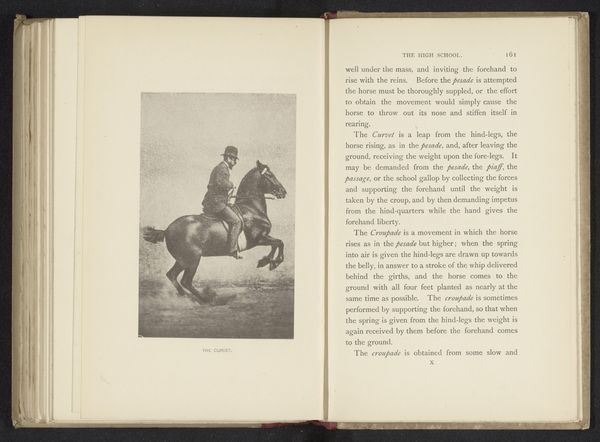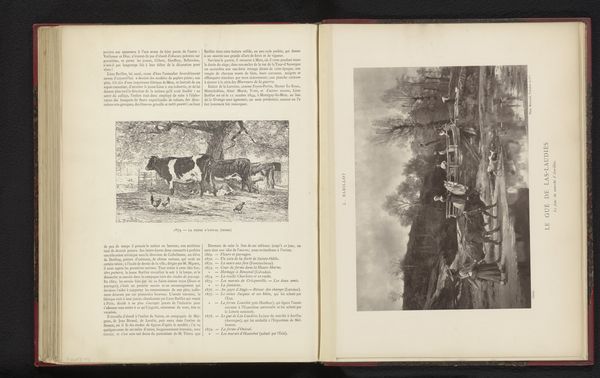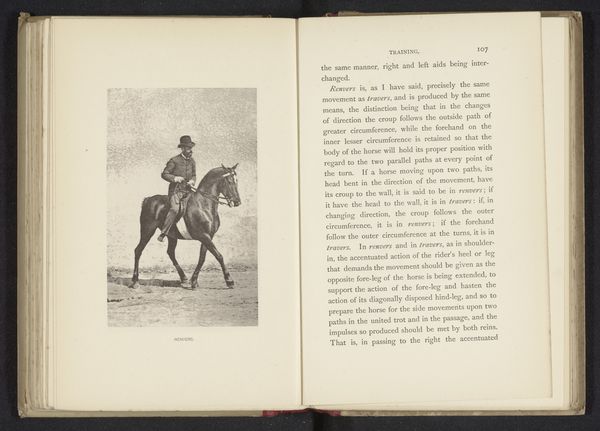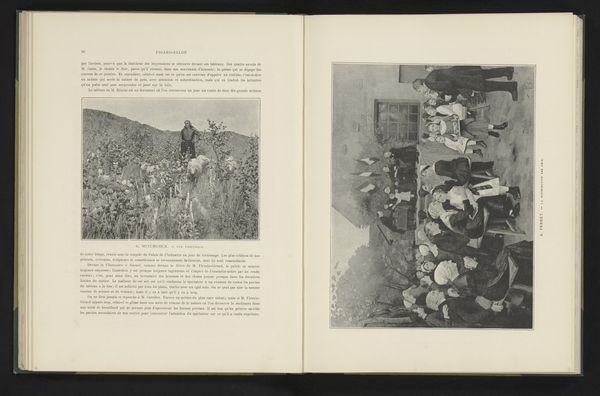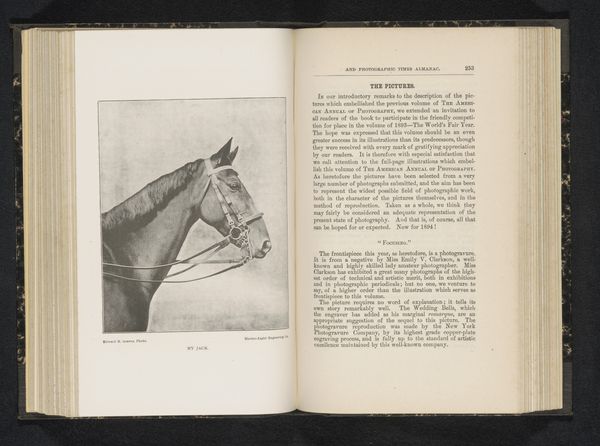
Reproductie van een schilderij van een jonge vrouw te paard door Aimé Morot before 1901
0:00
0:00
Dimensions: height 281 mm, width 232 mm
Copyright: Rijks Museum: Open Domain
Editor: So this is a reproduction of "Young Woman on Horseback" by Aimé Morot, predating 1901, and appears to be a print taken from a photograph or engraving. I'm immediately struck by the dynamism in the horse’s pose; it’s so full of potential energy. What compositional elements jump out to you? Curator: Indeed, the subject certainly animates the surface of the print. I am compelled by the artist’s attention to tonal gradations. Consider how Morot contrasts the deeper blacks of the rider's habit with the varied greys defining the musculature of the horse. Note also the composition: observe how the verticality of the slender trees guide the viewer's eye towards the seated rider, drawing us further into the tableau. Editor: The positioning of the horse in contrast to the darkness of the surrounding forest creates quite a strong visual interest. Does the number on the horse hold any semiotic significance, or is it simply a visual element? Curator: An astute observation. The number acts as an index; that is, an indicator of something beyond the visual. The integration of the number creates tension, compelling us to ask what event this piece is memorializing. It is this exact sense of mystery that creates a successful work, don't you agree? Editor: Absolutely! It is fascinating how analyzing the visual elements opens up so many avenues of interpretations. It shifts the focus from mere representation to questioning the artwork's underlying implications and intentions. Curator: Precisely! Focusing on these structural elements facilitates engagement beyond conventional assumptions about subject matter or historical background, illuminating the very artifice of art. A fruitful analysis, I must say.
Comments
No comments
Be the first to comment and join the conversation on the ultimate creative platform.
